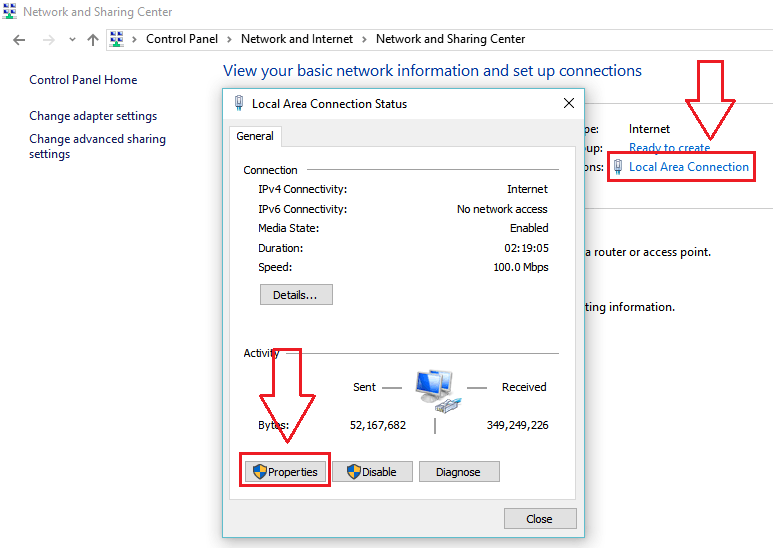

- #CHANGING DNS SERVERS MAC OS HOW TO#
- #CHANGING DNS SERVERS MAC OS PC#
- #CHANGING DNS SERVERS MAC OS WINDOWS 8#
- #CHANGING DNS SERVERS MAC OS WINDOWS#
Then, type ‘ interface show interface‘ and again press Enter. Step 2- Type ‘ netsh‘ in the text box and hit Enter.
#CHANGING DNS SERVERS MAC OS PC#
Step 1- Run ‘ Command Prompt‘ on your PC as an administrator. The steps involved in this method are listed below.
#CHANGING DNS SERVERS MAC OS WINDOWS#
There are three different methods that you can use to change DNS on your Windows 10.
#CHANGING DNS SERVERS MAC OS HOW TO#
Thus, here we are with some of the best methods which you can use to change the DNS on your Windows 10 PC.ĪLSO READ: 6 Ways to Fix DS4windows Not Working in Windows 10 Games How to Change DNS on Windows 10 These are some of the benefits of changing the DNS on your device. The internet service can be improved considerably just by changing the DNS. The protection of your device is increased due to the change in DNS.Ĥ. You can filter the content which can be accessed on your device.ģ.
#CHANGING DNS SERVERS MAC OS WINDOWS 8#
You can then follow step 6-9 of setting up the DNS settings as outlined for Windows 8 users.2. Right click on the network connection that you are currently using then click on properties. A new window with all your network lists will appear on the screen. Then click on ‘Change Adapter Settings’. Once you are in the Control Panel Window, click on ‘View Network Status and Tasks’. Click on the start menu and then click on control panel. This will open up the Network Connections window. Select ‘Change adapter settings’ in the new window. From the resultant change in icons, you can then select Network and Sharing Center. In the control panel window, select category and then change it to either large or small icons. For windows 8 users, move your cursor to either the bottom right or top right corner of the screen and select settings then control panel. Windows 8 Users Change Dns Server Windows 10 For your new settings to take effect immediately, ensure that you flush your web browser’s cache and the DNS resolver cache as well. Now click Ok, and then close the tabs in order of how they appear before finally closing the Network Connections Window. Select ‘Use the following DNS server addresses’ and then type in the IP addresses of your preferred DNS server in the Preferred DNS server and Alternate DNS server fields. Depending on the DNS server that you are using, you can either choose ‘Internet Protocol Version 6’ or ‘Internet Protocol Version 4’ (generally, TCP/IPV4 is more preferred for all DNS servers) then click properties. Right click on the network connection that you are currently using then click on properties. This will take you to the Network Connections Window. From the main screen, right click on start menu and select network connections. Tip: Ensure that you’ve logged into your system using valid administrator rights. Now your Windows device is connected with Google DNS servers using its IPv4 and IPv6 address enables them to use the Google server rather than using the Service provider DNS server in Windows. 
Restart your browser and then try your connection.Enter the new IP address mentioned above at Preferred and Alternate DNS Server locations > Click on OK button > Close.Write this IP address to reconnect them in the future if needed.Tab on DNS tab and look if see any IP address listed there.Select the Networking Tab > Select the Internet Protocol Version 4 or 6 (Ipv4 or IPv6) from list.Click on Properties of Ethernet with right-click to change its DNS or Open Properties of Wireless connection with right-click.Click Change Adapter Setting and select the Connection to be changed.Open Network and Sharing center inside the same option.Selects the Network & Internet option from Menu.
 Launch your Windows system and Go to Control Panel. This step needs to be performed, if you are using a Windows server and make sure you have got your IP address that needs to be filled in the settings.
Launch your Windows system and Go to Control Panel. This step needs to be performed, if you are using a Windows server and make sure you have got your IP address that needs to be filled in the settings.







 0 kommentar(er)
0 kommentar(er)
